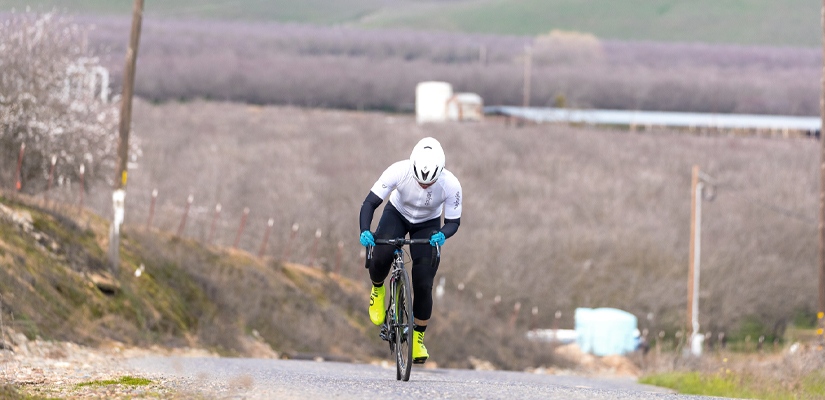How To Build A Pacing Plan For Long Events

Nailing your pace is essential in long cycling events. The right pacing plan will remove the guesswork before your next event and help you cross the finish line faster.
Why do I Need a Pacing Plan?
Endurance sports are all about energy management. In a cycling race, energy is a precious commodity. The harder you go, the faster you burn through your reserves. Using a pacing plan will ensure you optimize energy expenditure. If you pace the event correctly, you’ll cross the finish line just as you’re using the last bit of energy. Go too hard and you won’t be able to finish strong. Go too easy, and you’ll lose time on the course.
Another benefit of preparing a plan is that you will reduce your cognitive load. Long events are stressful enough without having to calculate how hard you should be riding. Remove the guesswork beforehand and focus on hitting your target during the event.
What is a Pacing Plan?
A pacing plan is selecting the target power you need for the event and planning how you are going to hit that target. The key numbers in pacing strategies are Intensity Factor (IF) and Normalized Power (NP). IF is your NP divided by your FTP. For example, if your NP for a ride is 295w, and your FTP is 300, your IF would be 0.98. It’s another way of saying that you rode at 98% of your threshold.
NP is used because it gives you an average number if you would have ridden at a steady power output. IF is central for pacing because it accounts for using different energy systems. This becomes clear when we add time to the mix. You could ride at an IF of 0.98 for 45 minutes, but wouldn’t be able to sustain that pace for 3 hours.
In general, shorter races will have a higher IF than longer ones. But once you pass 90 minutes, the dropoff is diminished. For steadily paced efforts, as the duration of your effort increases, the intensity drops. During high-intensity efforts, the energy system demands are more complex, but as the intensity drops, the energy system demand largely shifts to the aerobic system. For this reason, events, even as long as 90 minutes, enact a similar demand on the aerobic system as something much longer.
Pacing Strategy and Target Power
To find your target NP, you’ll need to choose an IF first. The chart below is a good starting point for IF. These recommendations are based on what we’ve seen as being possible for trained athletes. Depending on your level of experience, you may want to reduce the IF.
20 minutes – 1.05 IF
1 Hour – 1.00 IF
1.5-2.5 Hours – 0.90 IF
2.5-4.5 Hours – 0.80IF
4.5-16 Hours – 0.70 IF
To get your target NP, multiply the IF by your FTP. For example, if your event is going to last three hours and your FTP is 270w, you would multiply 0.80 x 270w= 216w. Your target Normalized Power is 216w.
Now that you have a target power, you can take your pacing strategy a step further by planning how you are going to hit that target. The fastest pacing plans use a negative split. This is riding the first half of the course below your target, then over for the second half. By the end of your race, you will average the target power. Using the example above, a negative split would be to ride the first 1.5 hours at 190w, then ride the last 1.5 hours at 242w, for an average of 216w. Negative splits ensure that you don’t start too hard and allow you to push the pace in the latter part of the event. Negative splits are fun because it usually means you are passing other riders for the last half of the race.
With your pacing strategy in hand, you can go the final step and plan your nutrition. Finding your energy expenditure in kilojoules (kJs) is simple. Just multiply your avg. wattage by time in seconds, then divide by 1000. You can estimate your total time to get an approximate number to shoot for. 216w x 10,800 (3 hours in seconds) ÷ 1000 is 2,332kJs. Since a kJ is roughly equivalent to a Calorie, you can decide how you are going to fuel your ride.
Adjusting Your Pacing Plan Mid-Race
Sometimes you will need to change your plan mid-race. Your pacing plan should represent the ideal, but be ready to make adjustments. Maybe you’re just having a bad day, didn’t sleep well leading into the event, or didn’t eat enough breakfast. More than anything, nutrition and hydration will affect your pacing strategy. Make sure you are eating and drinking enough to give your body the fuel it needs to hit your numbers. Finally, race tactics can influence your plan. If you’re in a good group that’s not riding at your target, you may want to ride with them, until you find another. However, be cautious of expending too much energy early in the day to stay with a faster group.
For more on nutrition and pacing, check out Nutrition and Pacing Strategies for the Leadville 100.